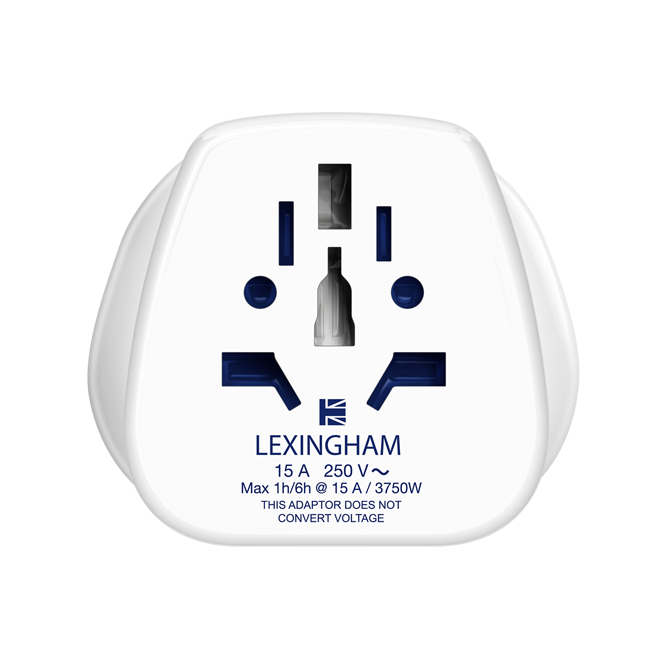What’s the right adaptor for me?
We will help you find the right
solution for your needs.

30.08.2023
Six Ways to Save on Energy Bills
According to the EU’s Copernicus Climate Change Service, July became the hottest month ever recorded on Earth. Likewise, the past few winters have been getting much colder.
Luckily, odds are you are privileged enough to have the comfort of an insulated home that protects you from these extreme weather temperatures. Unluckily, energy bills can quickly become expensive when you factor in lighting, electronic devices, appliances, and more.
However, there is a solution, or rather, many of them! Following the right tricks and tips can significantly reduce your energy bills without sacrificing your life quality.
Ready to begin your energy-efficient life?
1. Use less hot water
During our daily routine, we are prone to use hot water in circumstances when cold water does the trick just as well. Heating the water and keeping it warm requires lots of energy, so reducing overuse is one of the fastest ways to save on energy bills.
For example, you don’t need to wash your teeth with hot water or keep the tab running as you do. Likewise, doing your laundry at high temperatures is not indispensable—most of the time, you can wash your clothes in a lukewarm setting without any visible difference.
Reducing your time is critical regarding showers—keeping it short and simple can save up to £75 a year!
2. Turn off the lights when you leave a room
Unless it’s indispensable, always ensure you turn off the lights in any room you are not using.
There is a good reason why this is often the number one advice regarding energy efficiency. According to the Energy Saving Trust, you can save up to £25 by turning off the lights when you leave a room.
The number can grow if you let your lightbulbs rest while leaving for work or sleep with all lights off. Switching to LED lightbulbs is another energy-efficient strategy, as they provide the same amount of light while consuming less energy.
3. Use energy-efficient appliances
Not all appliances are made the same. Two devices that may look or feel identical can consume vastly different amounts of energy to perform the same task, meaning you can be paying twice as much as you could be paying.
Investing in energy-efficient appliances may be a bit more expensive initially, but it can save quite a lot of money in the long run. Replacing a regular refrigerator with an energy-efficient one can save you 9% in utility bills by itself, and studies estimate that using energy-efficient appliances exclusively can reduce costs by 30%.
You can verify whether or not your appliance is among the most energy-efficient by checking the labels. Usually, they will be identified with the EU energy label, the Energy Star mark, or the Energy Saving Trust mark.
4. Unplug appliances you’re not using
While you might think that turning off appliances keeps them from using further energy, the truth is that they continue to draw power as long as they remain plugged in.
This phenomenon called standby power affects nearly all electronic devices or appliances you own at home—microwaves, chargers, Wi-Fi routers, desktops, and more. While it’s hard to determine how much of your bill comes from standby power, experts estimate it must be from 10% to 20% of electricity use. Maybe even more.
While not all appliances can be unplugged repeatedly without causing some degree of damage, you can make a difference. Start with chargers, small appliances, or television sets to slowly but surely build your way up.
5. Improve your insulation system
Insulation allows you to keep the temperature inside your home stable by preventing heat from escaping or penetrating. As such, it helps you preserve the toasty temperature indoors during winter and keeps the heat away during summer.
Heat comes and goes without proper insulation, so your appliances have to work extra hard to keep temperatures stable and compensate for the fluctuations. Estimates agree that you could lose up to 45% of your house’s heat during winter, upping up the energy consumption to compensate for it.
It may be a significant investment, but improving your roof, wall, and floor insulation will do wonders for your energy efficiency and, in turn, your wallet. Likewise, investing in smart thermostats can help you detect temperatures and rise or low them automatically as needed, instantly saving you a few bucks.
6. Build Habits
Most of these tips are not a one-off thing. Instead, they’re ongoing practices that you must perform every day without fail if you wish to see results months or years down the line.
That is why the number one way to save money on energy bills is simple: build consistent and permanent habits. It’s not enough to stop using hot water only when you remember or unplug your appliances once a month—you must do it regularly.
Individually they may be a little, but if done consistently and all at once, these tips can make a big difference in your life and budget.
Have you managed to cut down your energy bill short? Share your best tips with us!
23.12.2022
A Beginner’s Guide to the Metaverse
When it was announced that Facebook will now be known as “Meta,” a lot of hype grew around the Metaverse and the many possibilities it could offer.



























